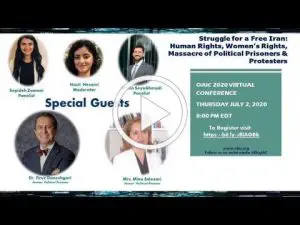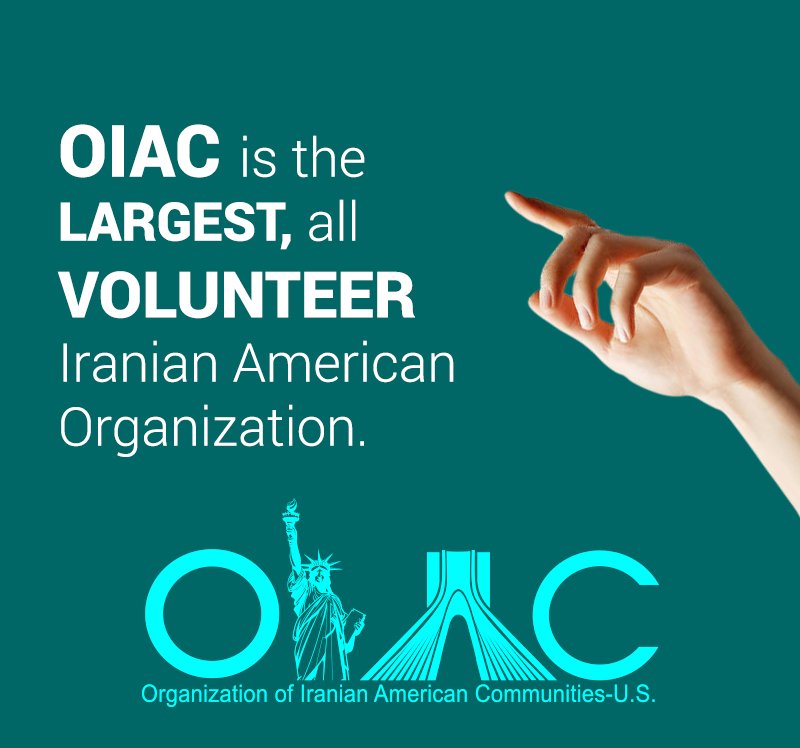 FAQ: The “Snapback” of UN Sanctions on Iran
FAQ: The “Snapback” of UN Sanctions on Iran
FDD, July 9, 2020
WHAT IS “SNAPBACK”?
The term “snapback” is used to describe the process by which UN sanctions and restrictions may be re-imposed on the Islamic Republic of Iran in accordance with UN Security Council Resolution (UNSCR) 2231, which endorsed the 2015 Iran nuclear deal, formally known as the Joint Comprehensive Plan of Action (JCPOA).
WHAT SANCTIONS AND RESTRICTIONS WOULD BE RE-IMPOSED ON IRAN UNDER A SNAPBACK?
A snapback would trigger the re-imposition of all sanctions and restrictions on Iran described in UNSCRs 1696 (2006), 1737 (2006), 1747 (2007), 1803 (2008), 1835 (2008), and 1929 (2010). This would include: 1) an indefinite embargo on the transfer of conventional arms to and from Iran; 2) an indefinite ban on international support for Iran’s missile program; 3) an outright prohibition on all testing and development of nuclear-capable missiles; 4) a demand to halt all enrichment-related activities; and 5) an indefinite travel and asset ban for sanctioned individuals.
HOW DOES UNSCR 2231 DIFFER FROM THESE PAST RESOLUTIONS ON IRAN?
UNSCR 2231 terminated the effect of past resolutions on Iran and made significant changes to longstanding sanctions and restrictions. UNSCR 2231 removed the demand that Iran halt all enrichment-related activities. Rather than prohibiting Iran from conducting missile tests, UNSCR 2231 merely called upon Iran not to conduct such activities. Additionally, UNSCR 2231 established expiration dates for previously indefinite restrictions, with the arms embargo and travel ban lifting in 2020, missile restrictions lifting in 2023, and a wide range of nuclear restrictions lifting through 2031. These expiration dates are commonly known as “sunsets.”
WILL THE SNAPBACK TOOL BE AVAILABLE INDEFINITELY?
No. UNSCR 2231 establishes a “sunset” on snapback in 2025. After that, sanctions and restrictions on Iran cannot be re-imposed using the snapback mechanism.
HOW DOES SNAPBACK WORK?
The snapback process begins when a “JCPOA participant State” – as defined in UNSCR 2231 (see the next question) – notifies the UN Security Council of an issue believed to constitute “significant non-performance of commitments under the JCPOA.” Unless the Security Council adopts a resolution within 30 days to ignore the complaint, all of the provisions of UNSCRs 1696 (2006), 1737 (2006), 1747 (2007), 1803 (2008), 1835 (2008), and 1929 (2010) that had been terminated by UNSCR 2231 come back into force. This process is called “snapback” because all prior restrictions on Iran snap back into place. Any member of the Security Council can submit a resolution to ignore the complaint. After 10 days, if no member has already done so, the president of the Security Council must submit such a resolution for a vote. The resolution to ignore a complaint can be vetoed by any permanent member of the Security Council, in which case the snapback would come into force after the 30 days expire.
WHAT IS THE DEFINITION OF A JCPOA PARTICIPANT STATE?
Operative paragraph 10 of UNSCR 2231 defines “JCPOA participants” to mean China, France, Germany, the Russian Federation, the United Kingdom, the United States, the European Union, and Iran. The use of “JCPOA participant State” in the subsequent paragraph, therefore, refers to the same group, excluding the European Union, which is not a state.
Click to read more
 Selling Off Parts of Iran Causes Outcry
Selling Off Parts of Iran Causes Outcry
Iran Focus, July 9, 2020
Last week Iran’s parliament was the scene of an outcry. On one side stood foreign minister Mohamad Javad Zarif who tried to defend himself and his government’s foreign policies mainly on the nuclear case and the JCPOA.
On the other side were the MPs who accepted none of that. They just yelled at him over all the government’s defeats in its foreign policies and its economic situation, without considering that they all are “on the same ship” as Zarif told them. This means that if the regime drowns, they will drown all together, and it makes no difference in which faction they are in.
In between all the outcries, Zarif said: “Foreign policy is not a matter of factional dispute.” He added: “That is why foreign policy is within the general goals of the system in the hands of the leadership to avoid dualization and factionalism.”
With this, he confessed that he is just Supreme Leader Ali Khamenei’s puppet in the international tribune and follows the policies dictated by Khamenei. In other words, everything about the regime’s terrorism and the “Iran selling” is in the hands and on the orders of Khamenei. As one of the regime’s high clerics, Mohammad Mousavi Khoeiniha in a letter to him showed this reality when he said: “Managers who just come and go”.
What Zarif could not say
What Zarif could not say in that parliament meeting or just said a little part of it and did not stand out in all the cries, was clarified on the next in a meeting between the Senior Foreign Ministry officials with Eshaq Jahangiri, the first vice president of Iran’s President Hassan Rouhani:
“If our relationship with our neighbors is based on good neighborliness, nothing else will help us other than the Caspian Comprehensive Convention. Or our 25-year relationship with China which is actually in our national interest, but unfortunately, we see lies in these matters. In relation to China today, both the radical, reformist, and counter-revolutionary factions are working hard against it. On the JCPOA they did the same thing, they made a political satire of diplomacy and buried it and did not understand what they have done.” (Hamshahri Online, 6 July)
Selling off Iran via contracts
If we declare this paragraph a little, we will have the following:
Under the deceptive title of ‘good neighborliness’, the foreign minister is resolving the issue of Khazar sales (Caspian Sea), which has become a global scandal and is paving the way for the continuation of this treacherous and anti-Iranian project.
The 25-year contract with China is also one of the issues that the regime spreading the news about it, like all of its usual secretive policies, so that it can unveil it when its ugliness is shed. What is certain is that this policy is taking place in secret.
Click to read more
 IRAN: CORONAVIRUS FATALITIES IN 342 CITIES EXCEEDS 66,900
IRAN: CORONAVIRUS FATALITIES IN 342 CITIES EXCEEDS 66,900
Maryam Rajavi: The rapid rise in the number of Coronavirus victims is the strategy of mass casualties to forestall the danger of an uprising and their overthrow.
Maryma-Rajavi.com, July 7, 2020
The People’s Mojahedin Organization of Iran (PMOI/MEK) announced on Tuesday, July 7, 2020, that the Coronavirus death toll in 342 cities in Iran exceeds 66,900. The number of victims in Tehran is 16,900, Khuzestan 5,110, Khorasan Razavi 4,780, Mazandaran 2,995, Sistan and Baluchestan 2,130, West Azerbaijan 1,905, Golestan 1,680, Fars 1,405, Hormozgan 711, and Kohgiluyeh and Boyer-Ahmad 345.
The death toll is so high that the spokesperson for the regime’s Health Ministry quoted by the official news agency, IRNA today, announced that 200 people had died in the past 24 hours, up 26 percent from the highest figures announced in February and March. She said 3,270 patients were under special care and added, “The provinces of Khuzestan, Hormozgan, Bushehr, Kermanshah, Kurdistan, Ilam, West, and East Azerbaijan, and Khorasan Razavi are red, and the provinces of Tehran, Isfahan, Mazandaran, Golestan, Alborz, Kerman, Yazd, Sistan and Baluchestan, Hamedan, Zanjan and Ardabil are on alert.”
According to ISNA, today, the head of Tehran’s city council warned of a surge in the number of Coronavirus deaths. It said, “Yesterday, 70 people who died to Coronavirus were buried in Behesht Zahra.” Alireza Zali, head of Tehran’s National Coronavirus Combat Taskforce (NCCT), told ISNA yesterday, “In the past 24 hours, the number of new patients has risen to 534, which is one of the highest in the past few days … During this time, 84 patients have been admitted to the Intensive Care Units. The situation in Tehran Province is still worrying and unstable … So far, an attempt has been made to strike a balance between the new patients and the capacity of hospitals, but with the increasing statistics, the situation may change.”
Chair of the immunology section at Massih Daneshvari hospital said: “Actually there are no empty beds in this Hospital. We have erected sunshades in open space so patients can wait for hospitalization when beds are available. When the number of patients passes a certain threshold, it is normal that one would not be able to control it,” reported the Khabar-e-fori website on July 6.
Click to read more
 More Explosions, Fires At Industrial And Commercial Sites In Iran
More Explosions, Fires At Industrial And Commercial Sites In Iran
Radio Farda, July 13, 2020
In Iran police is investigating the explosion of a gas tank and a fire at an industrial complex in the country’s northeast, local news agencies reported. There were several condensate gas tanks at the location.
Javad Jahandoust, the fire chief at the Kavian Fariman industrial complex, some 20 miles (32 kilometers) south of Iran’s second largest city, Mashhad, was quoted as saying six storage tanks had caught fire, including the one that exploded.
He said the fire was under control and there were no casualties, but police were investigating the cause.
There have been several explosions and fires around Iranian military, nuclear and industrial facilities since late June. The most notable was a mysterious explosion and fire at Iran’s uranium enrichment facility in Natanz. The government claims it is still investigating the incident that some say is a foreign attack.
On Sunday, the official IRNA news agency reported a fire at a petrochemical facility in southwest Iran, which was blamed on an oil leak. There were no casualties.
Another fire broke out Monday evening in Najafabad, west of the central city of Isfahan that reportedly destroyed three shops at the local bazaar.
It is not clear how many of these incidents in recent weeks are accidents or deliberate acts of destruction. Some fires have occurred in forests and parks and some others at commercial establishments. But explosions and fires around military and strategic locations have led to a sense of planned acts of sabotage.
Click to read more
Iran Protests & more




 Iran: Man executed for drinking alcohol
Iran: Man executed for drinking alcohol
Amnesty International, July 10, 2020
Following the Iranian judicial authorities’ confirmation that on 8 July, a man in the city of Mashhad was executed following repeated convictions for drinking alcohol, Diana Eltahawy, Amnesty International’s Deputy Regional Director of Middle East and North Africa, said:
“The Iranian authorities have once again laid bare the sheer cruelty and inhumanity of their judicial system by executing a man simply for drinking alcohol. The victim was the latest person to be executed in Valkalibad prison, the site of numerous secret mass executions and a grotesque theatre of Iran’s contempt for human life.
“We deplore the Iranian authorities’ repeated use of the death penalty, which has earned it the shameful status of the world’s second most prolific executioner. There is no justification for the death penalty which is the ultimate cruel, inhuman and degrading punishment, and we urge the Iranian authorities to abolish it.”
Under Iran’s Islamic Penal Code, consumption of alcoholic beverages is punishable by 80 lashes, and if an individual is convicted and sentenced three times, the punishment on the fourth occasion is death.
A 55-year-old, Mortaza Jamali, was named as the victim of the execution in Mashhad, Razavi Khorasan province, in reports by independent media outlets and on social media. At the time of writing, Amnesty International had not yet been able to obtain more information about the details of his trial and sentencing.
In response to public outrage over the execution, the department of justice in Razavi Khorasan province issued an official statement today, listing the man’s criminal record from previous cases unrelated to his death sentence, in what appears to be a crude attempt to “justify” his execution.
Amnesty International opposes the death penalty in all cases without exception regardless of the nature or circumstances of the crime; guilt, innocence or other characteristics of the individual; or the method used by the state to carry out the execution. Amnesty International recorded at least 251 executions in Iran in 2019 in its annual Death Penalty report.
Click to read more
 Letter by Death-Row Prisoner Hossein Reyhani, Arrested in the Iran Protests in November
Letter by Death-Row Prisoner Hossein Reyhani, Arrested in the Iran Protests in November
Iran News Update, July 10, 2020
Major Iran protests erupted in November 2019 triggering the greatest existential crisis in the regime’s 40-year history. Protesters took to the streets in at least 191 cities because of the 30-50 percent increase in fuel prices, and immediately the demands of the protesting people changed, calling for regime change.
The regime has resorted to brute repression, killing at least 1500 protesters and arresting thousands more. It also shut down Iran’s internet completely for a week, blocking images of the protests from reaching the outside world.
The protests have spread to at least 190 cities in all 31 of Iran’s provinces. Protesters attacked centers of suppression, including government centers, security outposts, and state-affiliated banks, gas stations, and seminaries, particularly those affiliated with the Islamic Revolutionary Guard Corps (IRGC). Hundreds of buildings were torched or sustained serious damages.
The paragraphs above were a lookback at the events of Iran’s November 2019 uprising. What now very clear is that the regime had killed at least 1500 people. The names of more than 700 slain protesters have been announced by the People’s Mojahedin Organization of Iran (PMOI/MEK).
But what is unclear here is the fate of the arrested people and their exact number, which was estimated to be more than 12000 people. In the last week, the regime Judiciary decided to execute three of them, Amir Hossein Moradi, Saied Tamjidi, and Mohammad Rajabi.
Another one of the arrested people, Hossein Reyhani from the Greater Tehran Central Penitentiary (Fashafuyeh) wrote a letter about his situation, while he is awaiting his execution. Below is his letter:
“Hello to everyone who is listening to my voice. My name is Hossein Reyahni, son of Yadollah, born in 1987 and a married man with a family. Maybe it is funny that the crime that I have committed was just sending an SMS to one of my friends. When I saw the presence of the people on the street, I was so excited that the people are gathering on the streets. I was arrested by the IRGC’s intelligence brutally after 18 days (of the start of the protests). They have attacked our house very aggressively and transported me to the Evin prison. Which means that I was arrested on 4 December 2019.
“First, I was very terrified. Thirteen days in solitary confinement and after one month, they displaced me to the Fashafuyeh prison. I do not know why and how, just because of an SMS, I was sentenced to death for “waging war against God”. Until this day, just because I did not want my mother to hear about my sentence, I have kept silent and said nothing. And a few days ago, I got the divorce letter of my wife, and now nothing is important to me, and I have nothing to lose anymore.”
Click to read more
Commentary:The International Community’s Silence On Iran’s Unrest And Iranians’ Resistance
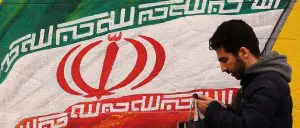
Although Iran is constantly in the headlines, not enough attention has been paid to the fact that it has witnessed unprecedented levels of social unrest for more than two years. Widespread social disenchantment culminated in two nationwide uprisings in 2017 and 2019.
Amidst ever worsening indicators of poverty, unemployment and inflation, small-scale protests quickly sparked a nationwide uprising in 2017. Throughout January 2018, close to 150 cities saw protests. Economic grievances quickly morphed into unequivocal demands for regime change.
Slogans that entered the mainstream during that uprising included “death to the dictator” and “hardliners, reformists, the game is over.” More slogans targeted Supreme Leader Ali Khamenei, who stands at the head of a system of absolute rule by religious authorities.
Now, Iranian dissidents plan to organize a global summit to bring more attention to the social unrest, which aims to offer concrete policy options vis-à-vis Iran and unseat the theocratic establishment. Speakers at this summit include former Senator Joseph Lieberman, former New York City Mayor Rudy Giuliani, former Attorney General Michael Mukasey and former Canadian Minister of Foreign Affairs John Baird.
In a speech at the height of the 2018 uprising, the regime’s supreme leader Ali Khamenei blamed his enemies, specifically the opposition People’s Mojahedin Organization of Iran, for preparing for and subsequently leading the mass protests. The regime’s claim against the oppositional group typically claims that the organization lacks social support and is inconsequential. Now, with growing public discontent and more protests on the horizon, the regime is apparently being forced to acknowledge the opposition’s influence. In the run-up to the uprisings, activists associated with the opposition posted numerous messages in public spaces that targeted the regime and urged its overthrow.
In November 2019, another major uprising rekindled a popular drive for regime change. The message, slogans and main demands of the protests, as well as the unambiguous call for regime change, seemed to align with what the opposition has advocated for over the past 40 years. The opposition, for example, has called for a free, secular, democratic and non-nuclear republic that respects human rights and gender equality.
Despite the massive political shifts in Iran, the international community and western governments have remained shockingly silent. This is while during the November 2019 uprising, a staggering 1,500 protesters were shot dead by the Islamic Revolutionary Guard Corps (IRGC) on Khamenei’s orders.
Click to read more
OIAC Youth Chapter
Donation
501 (c)(3) Tax deductible
Please,
Donate to Organization Of Iranian American Communities
Your donation will help OIAC advocates for a democratic, secular and non-nuclear government in Iran. Founded on the respect for human rights, gender equality, religious and ethnic tolerance, as wells as social, economic justice, and security for America. Our goal is to organize Iranian-American communities in the United States to promote these values.
Thank You,
http://www.oiac-us.com/donation/

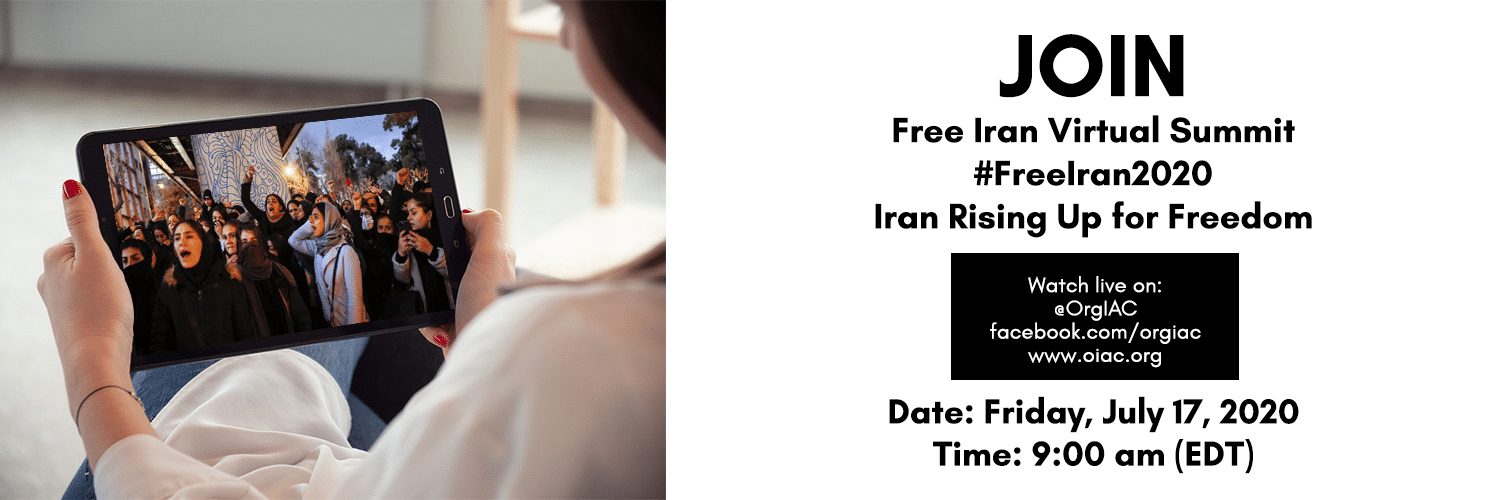
 FAQ: The “Snapback” of UN Sanctions on Iran
FAQ: The “Snapback” of UN Sanctions on Iran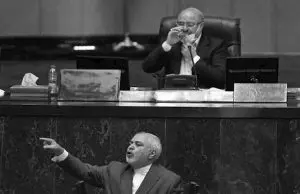 Selling Off Parts of Iran Causes Outcry
Selling Off Parts of Iran Causes Outcry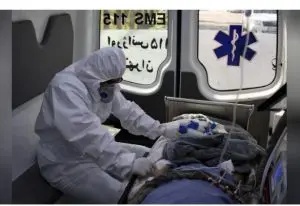 IRAN: CORONAVIRUS FATALITIES IN 342 CITIES EXCEEDS 66,900
IRAN: CORONAVIRUS FATALITIES IN 342 CITIES EXCEEDS 66,900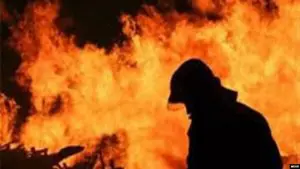 More Explosions, Fires At Industrial And Commercial Sites In Iran
More Explosions, Fires At Industrial And Commercial Sites In Iran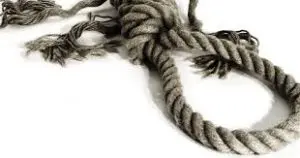 Iran: Man executed for drinking alcohol
Iran: Man executed for drinking alcohol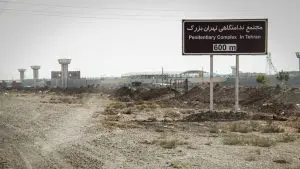 Letter by Death-Row Prisoner Hossein Reyhani, Arrested in the Iran Protests in November
Letter by Death-Row Prisoner Hossein Reyhani, Arrested in the Iran Protests in November